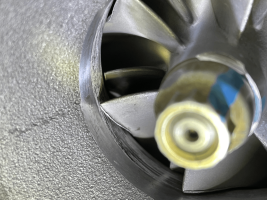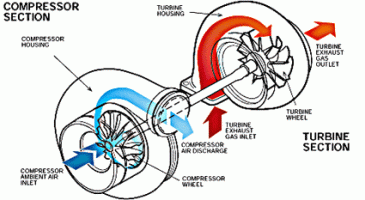sailertrash
Newbie
- Joined
- Nov 26, 2020
- Messages
- 5
- Location
- Bountiful, UT
- Aircraft
- AutoGyro Calidus
- Total Flight Time
- 750
Hey folks. We have a 2016 AutoGyro Calidus with a 914 UL motor. The engine has 490 hours, and it has started making this disturbing squealing sound between 4000 and 4500 rpms. (Listen to audio file attached below. Hopefully it works)
Today after reducing power to 3000 rpms in flight and then powering up full throttle again, the power did not come back past 4800 rpms. Manifold pressure also would not exceed 28 inches, and the terrible squealing sound was constant at all throttle settings. Maintaining altitude was also a struggle. This lasted about 5 or 6 minutes and then it sounded like the motor was trying to push itself for more power and something broke free and the power came back. The squealing noise was also gone after the power returned.
We run Aeroshell Sport +4 with 91 octane ethanol free fuel and change oil and filter every 50 hours. I've never seen any unusual metal on the magnet when changing. We try to be easy on the engine to the best we know how.
We have 3 theories of what this could be, but no one we know seems to be sure.
1. Gearbox issues that are apparently common with Rotax owners who idle too low or have heavy props. (We do have a carbon fiber 4 blade Duc Propeller with nickel edge, but i don't think its heavy. It actually made our engine run smoother. We don't idle or warm up below 2000 rpm, but we have not replaced the bushing things in the gearbox that I read about on rotax-owner.com I just found out about those and don't know anything about them really.)
2. Problem with the turbo charger. Maybe coked oil? We do try to let it cool down before shutdown. (I did find some oil inside the cowling, and a drop of oil dripping off the turbo)
3. Clutch for the pre-rotator might be engaging when it shouldn't. Perhaps it bogged the engine down today in flight?
If anyone has any ideas or has heard a noise like this before coming from an engine, I would be interested in what you think this could be.
Thanks!
Eric & Whitney
Today after reducing power to 3000 rpms in flight and then powering up full throttle again, the power did not come back past 4800 rpms. Manifold pressure also would not exceed 28 inches, and the terrible squealing sound was constant at all throttle settings. Maintaining altitude was also a struggle. This lasted about 5 or 6 minutes and then it sounded like the motor was trying to push itself for more power and something broke free and the power came back. The squealing noise was also gone after the power returned.
We run Aeroshell Sport +4 with 91 octane ethanol free fuel and change oil and filter every 50 hours. I've never seen any unusual metal on the magnet when changing. We try to be easy on the engine to the best we know how.
We have 3 theories of what this could be, but no one we know seems to be sure.
1. Gearbox issues that are apparently common with Rotax owners who idle too low or have heavy props. (We do have a carbon fiber 4 blade Duc Propeller with nickel edge, but i don't think its heavy. It actually made our engine run smoother. We don't idle or warm up below 2000 rpm, but we have not replaced the bushing things in the gearbox that I read about on rotax-owner.com I just found out about those and don't know anything about them really.)
2. Problem with the turbo charger. Maybe coked oil? We do try to let it cool down before shutdown. (I did find some oil inside the cowling, and a drop of oil dripping off the turbo)
3. Clutch for the pre-rotator might be engaging when it shouldn't. Perhaps it bogged the engine down today in flight?
If anyone has any ideas or has heard a noise like this before coming from an engine, I would be interested in what you think this could be.
Thanks!
Eric & Whitney
Last edited:



